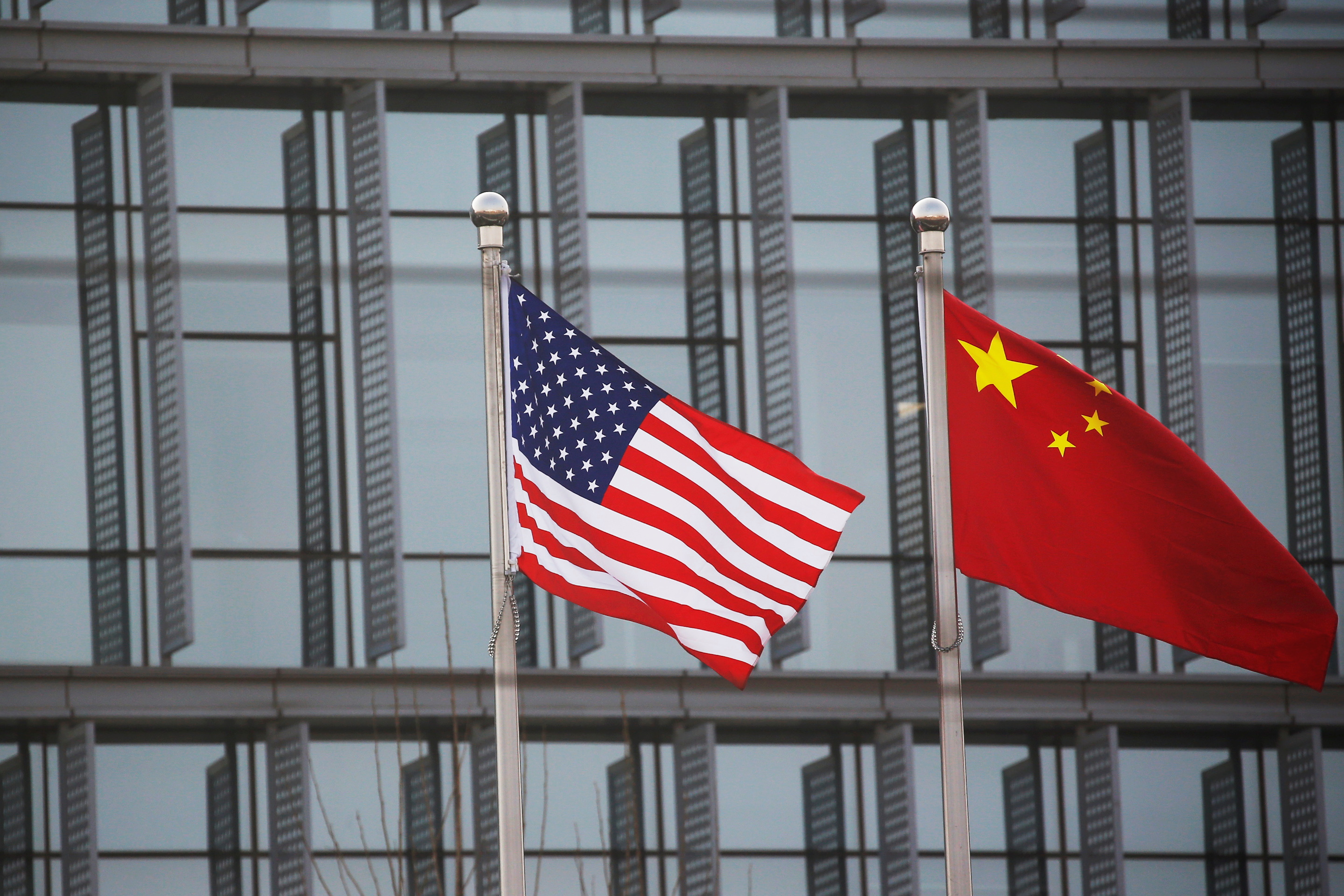
近期,中美两国高层频繁互访,两国关系呈现止跌企稳态势。然而,在一众关键性问题上,中美仍秉持不同看法,其中之一便是中国的制造产品出口问题。
4月初,美国财政部长珍妮特·耶伦访华,其间特别强调了美国对于中国关键领域产能过剩的关切。耶伦称,中国的电动车、电池、太阳能板、半导体等制造产品正在充斥全球市场,引发美国、欧洲、日本、墨西哥等主要经济体不断增加的忧虑。
4月中旬,中国财政部副部长廖岷则应邀回访美国。此前,在耶伦访华情况媒体吹风会上,廖岷曾回应了美国担忧,表示“中方对产能问题高度重视”,但指出“应结合全球分工和国际市场情况分析产能问题……贸易保护主义措施无助于解决问题”。
华尔街日报近期将中国自疫情爆发以来不断增长的制造产品出口称为“中国冲击2.0”(China Shock 2.0)。根据中国国家外汇管理局数据,2023年,中国货物贸易顺差为6080亿美元,实现历年次高——历史最高额为2022年的6686亿美元。
出口内容变化
和发生于20年前的“中国冲击1.0”相比,曾经中国的出口货物以价格低廉的日用消费品为主,如今中国的出口内容则转变为以新能源汽车、太阳能板、风机涡轮为代表的工业产品。
“中国高附加值产品出口量和在全球份额不断上升。”通商律师事务所合伙人、贸易管制及救济专家侯霄华律师如此观察,“以汽车为例,2017年以来中国汽车的全球竞争力进步显著,2024年出口量仍明显上升。根据海关总署今年2月数据,中国出口的车辆及零件、铁道及电车道机车、轨道固定装置及零件,和各种交通信号设备环比上涨33.9%,出口增长量位于所有工业品之首。”
“此外,中国传统出口份额也稳步增长。比如金属原材料工业品,包括钢铁、铝和锌制品的出口量同比指数上涨20-40%;非金属原材料工业品、电气元件、机器设备出口量同比上涨10%以上。”
究其原因,侯律师认为主要在于“中国近年产业升级加速”,加之疫情导致外部需求激增,共同导致中国工业品贸易顺差快速增长。他举了半导体行业的例子:2018-2020年间,在国产化替代战略影响下,中国半导体行业快速发展,“同时疫情期间欧美等国半导体供不应求,因此中国向欧美半导体出口量大幅增长”。
对华贸易调查加剧
中国制造产品的大举出口,恰逢美国、欧洲等经济体近年强调提升本地制造能力、增加就业机会。因此,欧美多次使用各类贸易调查及制裁工具,希望阻滞中国出口的不断加剧。
以美国的对华贸易调查为例,侯霄华律师告诉ALB,主要分为反倾销反补贴和反规避调查、337调查,以及301调查。
其中,“三反调查”是最传统的手段,“中国制造业规模庞大,规模经济效应表现明显。但是欧美始终否认中国产品成本低廉的事实,主张中国生产商和出口商为霸占国外市场故意压低价格,从而向中国各行各业的产品发起反倾销调查,对中国政府对特定行业的补贴行为发起反补贴调查”。
337调查也是近年的热点话题,“是美国根据《1930年关税法》第337节发起的调查,调查对象为针对从中国进口的、侵犯美国知识产权的产品,目的为禁止一切不公平竞争行为或向美国出口产品中的任何不公平贸易行为”,仅2022年一年,美国发起的337调查就有近四成针对中国企业。
301调查则是美国根据《1974年贸易法》第301节发起的调查,主要含义是保护美国在国际贸易中的权利,对其他被认为贸易做法“不合理”“不公平”的国家进行调查,侯律师介绍道。
过去几周,301调查无疑受到更多关注:4月17日,美贸易代表办公室宣布发起针对中国海事、物流和造船业的301调查;同一天,拜登在一场活动中表示考虑将中国输美钢铝产品的关税提高至目前的3倍——这一决策也将基于此前一项301调查的重新评估结果。
目前,多数制造产品依旧采用传统的线下贸易方式,然而伴随互联网和数字化日益重塑社会的方方面面,工业品跨境电商潮起云涌,或将重塑出口格局。这将如何影响未来的贸易制裁走向?
“无论通过电商平台,还是传统方式出口,欧美对中国的贸易制裁都依然存在。”侯霄华律师坦言,“因为电商平台仅是商业模式,但并不影响中国出口价格低廉、对欧美相关产业市场将形成冲击这一事实。换言之,只要中国出口价格对欧美国内市场产生损害或实质性损害威胁,欧美就会继续发起贸易调查。”
可能的救济手段
针对美国最新的301调查声明,中国外交部已公开表示反对。此外,外交部以及中国企业也在积极寻求贸易救济手段,维护自身权益。
例如3月底,针对美国《通胀削减法》要求新能源汽车只有在北美完成“最后组装”才能享受补贴的政策,中国商务部向WTO提出了歧视性政策起诉。不过侯霄华律师指出,鉴于WTO上诉机构自2019年便停摆,WTO的争端解决机构即便出具有利于中国的裁决,也不具备执行力,不影响美国的补贴政策持续有效。
因此,侯律师指出,“如果中国企业对美国商务部仲裁裁决不满,最有效的解决方法是上诉至美国国际贸易法院。从目前我们代理的多家企业上诉结果来看,国际贸易法院倾向于限制美国商务部自由裁量权,在多起案件中支持中国企业的诉求。如果中国企业对国际贸易法院判决不服,还可以进一步上诉至美国联邦巡回上诉法院”。
当然,他进一步指出,虽然可以通过诉讼进行救济,“但最高效的方法还是在美国商务部立案伊始就积极应诉,或申请分别税率”。就此,专业律师可以指导强制应诉企业完成答卷、补卷和核查;或指导其他企业完成分别税率申请,并立案调查初裁和终裁中获得分别税率,“这是最具性价比的、维护住美国市场的方式”。
China's industrial overcapacity sparks global concern, leading to more trade barriers
While high-level exchanges between China and the United States are signalling a tentative stabilization in trade relations, there have been concerns from the West over China's market-dominating industrial goods, leading to an uptick in trade investigations and sanctions from major economies seeking to protect domestic interests. Lawyers observing the shifting export dynamics offer potential remedies for Chinese companies facing mounting international trade challenges.
In recent weeks, high-level visits between China and the United States have suggest a stabilizing trend in bilateral relations. However, the two countries still hold differing views on several key issues, including China's manufacturing exports.
In early April, U.S. Treasury Secretary Janet Yellen visited China, emphasizing concerns about China's overcapacity in key sectors. Yellen noted that China's manufactured products, such as electric vehicles, batteries, solar panels, and semiconductors, are flooding global markets, causing growing concern among major economies like the U.S., EU, Japan, and Mexico.
In mid-April, Chinese Vice Minister of Finance Liao Min visited the U.S., acknowledging the overcapacity concerns while suggesting that trade protectionism is not the solution. He stressed that global supply chains and international markets should be considered when addressing overcapacity issues.
The Wall Street Journal recently coined the term "China Shock 2.0" to describe China's ever-increasing manufacturing exports since the COVID pandemic. According to China's State Administration of Foreign Exchange, in 2023, China's merchandise trade surplus reached $608 billion, the second highest on record, and only a little short of the $668.6 billion in 2022.
Changing Export Dynamics
Twenty years ago, during the "China Shock 1.0" period, China primarily exported low-cost consumer goods. However, today's exports have shifted toward higher-end industrial products like electric vehicles, solar panels, and wind turbines.
"China's exports of high-value-added products and its global market share are on the rise," observes Hou Xiaohua, a partner at Commerce & Finance Law Offices specializing in trade sanctions and remedies. "Since 2017, China's automotive industry has seen significant global competitiveness, with export volumes continuing to grow in 2024. According to February data from China's Customs Bureau, exports of vehicles and parts, railway and tram locomotives, track fixtures and parts, and various traffic signal devices have increased by 33.9 percent month-on-month, leading the growth in all industrial products."
"Moreover," Hou continues, "traditional export sectors are also showing steady growth. For example, exports of industrial goods made from metals like steel, aluminum, and zinc increased by 20-40 percent year-on-year, while exports of non-metallic industrial goods, electrical components, and machinery equipment grew by over 10 percent year-on-year."
Hou points out that the accelerated industrial upgrades in China in recent years, along with the surge in external demand during the pandemic, are the primary drivers of the rapid growth in China's industrial trade surplus. He gives the semiconductor industry as an example: between 2018 and 2020, under the influence of the domestic substitution strategy, China's semiconductor industry developed quickly. "Simultaneously, Western countries faced a semiconductor shortage during the pandemic, leading to a significant increase in China's semiconductor exports to these markets."
Increasing Trade Investigations and Sanctions
The surge in Chinese exports coincides with a renewed focus on boosting domestic manufacturing and employment in the U.S., Europe, and other major economies. This has led to an increase in trade investigations and sanctions aimed at curbing the growth of Chinese exports.
Taking the U.S. as an example, Hou explains that U.S. trade investigations into Chinese exports fall into several categories: Anti-dumping, anti-subsidy, anti-circumvention, Section 337 investigations, and Section 301 investigations.
The traditional approach, known as the "three antis," targets what is perceived as China’s large-scale manufacturing economy and its associated cost advantages. “Western nations often dispute China’s low-cost manufacturing, alleging that Chinese producers intentionally undercut foreign markets. This has led to anti-dumping investigations targeting Chinese products, along with anti-subsidy probes addressing the Chinese government's support for certain industries,” says Hou.
Section 337 investigations, based on the Tariff Act of 1930, focus on alleged intellectual property infringement by imported products from China, aiming to prohibit unfair trade practices. In 2022 alone, nearly 40 percent of Section 337 investigations in the U.S. were directed at Chinese companies.
Meanwhile, Section 301 investigations, derived from the Trade Act of 1974, target what the U.S. deems "unreasonable" or "unfair" trade practices, explains Hou.
In recent weeks, Section 301 investigations have garnered increased attention: On April 17, the U.S. Trade Representative's office announced a Section 301 investigation into China's maritime, logistics, and shipbuilding industries. On the same day, President Biden indicated at an event that he is considering tripling tariffs on Chinese steel and aluminium products imported into the U.S.— which also linked to a re-evaluation of a prior Section 301 investigation.
Currently, most manufacturing products still rely on traditional offline trade methods, but as the internet and digitalization continue to reshape various aspects of society, a surge in cross-border e-commerce for industrial goods may redefine the export landscape. How might this influence the trajectory of future trade sanctions?
Hou believes that “whether through e-commerce platforms or traditional export methods, trade sanctions against China in the U.S. and Europe will persist. E-commerce is just a business model; it doesn't change the fact that China's low-cost exports can impact related industries in Western markets. In other words, as long as Chinese export prices pose actual or significant threats to Western domestic markets, trade investigations will continue."
Potential Remedies
In response to the latest U.S. Section 301 investigation announcement, China's Ministry of Foreign Affairs has publicly voiced opposition. In addition, both the nation and Chinese companies are actively seeking trade remedies to protect their interests.
For instance, in late March, China's Ministry of Commerce filed a complaint with the World Trade Organization (WTO) against the discriminatory policy in the U.S. Inflation Reduction Act, which requires electric vehicles to be assembled in North America to qualify for subsidies. However, Hou notes that with the WTO's appellate body suspended since 2019, even a ruling in favour of China would lack enforcement power, having little effect on U.S. subsidy policies.
Therefore, Hou suggests that if Chinese companies are dissatisfied with U.S. Department of Commerce rulings, the most effective solution is to appeal to the U.S. Court of International Trade. Based on the outcomes of appeals handled by his team, this court tends to limit the discretion of the U.S. DoC, siding with Chinese companies in various cases. If companies are unsatisfied with the Court of International Trade's decision, they can escalate the appeal to the U.S. Court of Appeals for the Federal Circuit.
He further notes that while litigation is an option, the most efficient approach is to respond actively to the DoC from the outset of an investigation or apply for separate tariffs. Lawyers can guide companies through mandatory questionnaires, reviews, and verifications. Alternatively, they can help other companies apply for separate tariffs and secure these rates during preliminary and final determinations. “This is the most cost-effective way to maintain access to the U.S. market,” says Hou.


